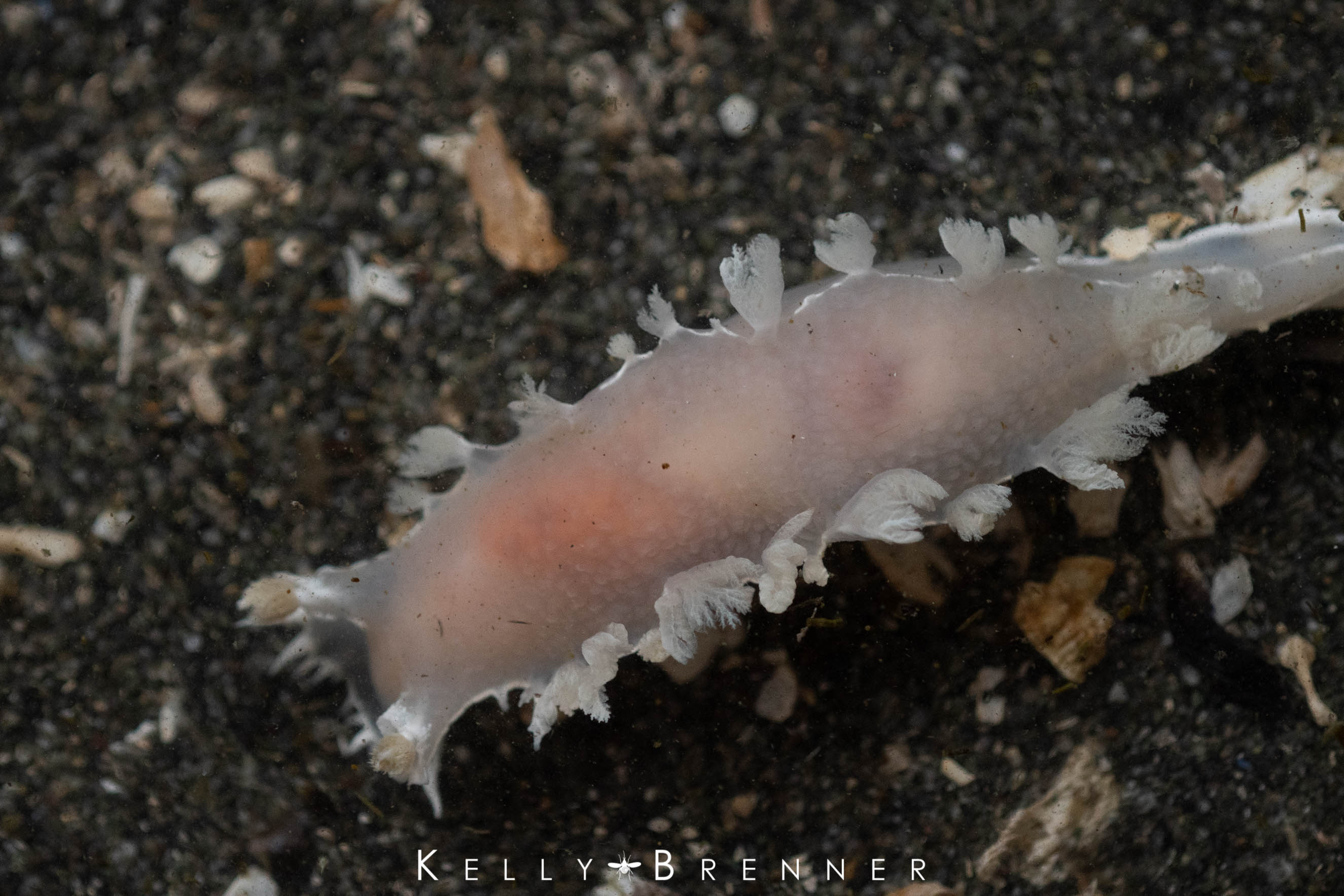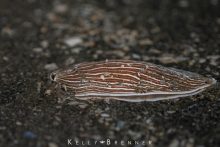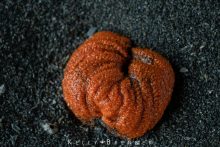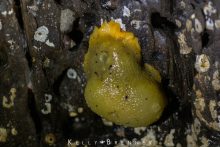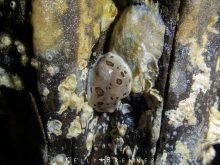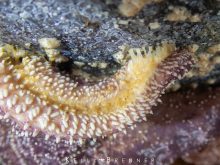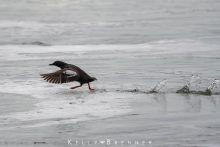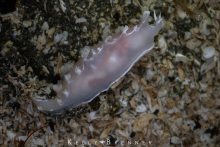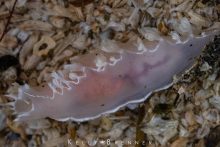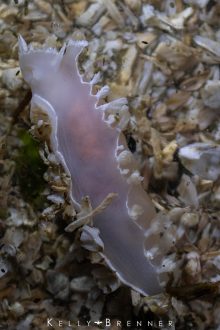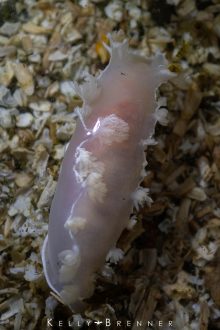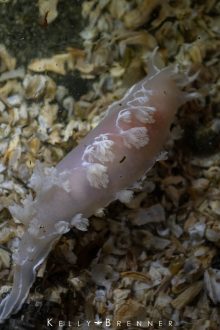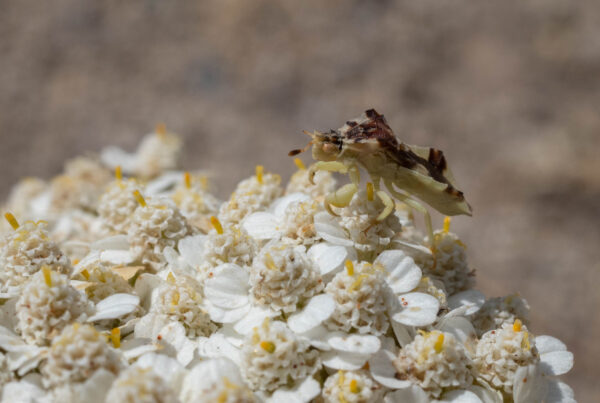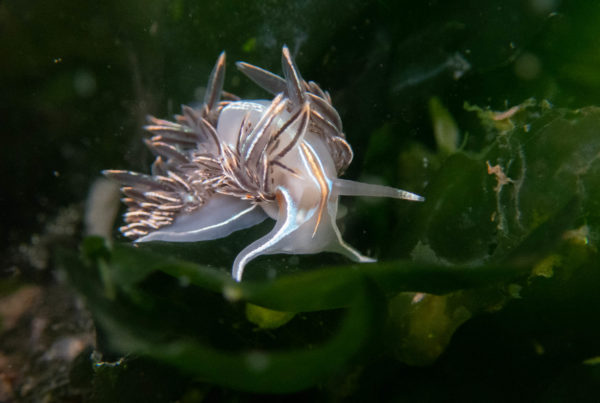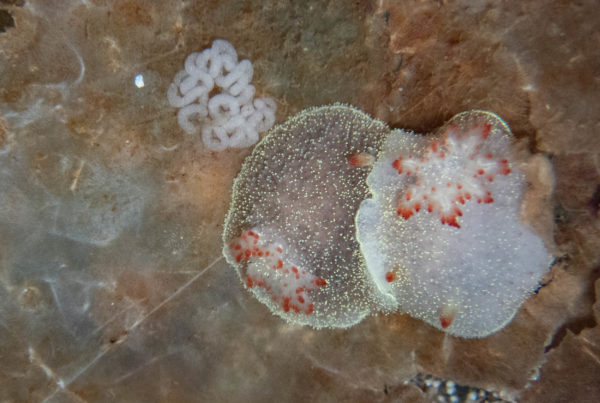This time of the year, I check my tide app almost as much as my weather app. Low tide in Seattle means the chance to find marine life that is harder to spot when the waves are higher up on our beaches. My standard go-to beach to explore during these low tides is Alki Beach, but yesterday I went somewhere different to look for nudibranchs and whatever else I might find.
In a little known park, under the dock where a ferry arrives and departs many times a day, live bright colored Orange Sea Pens. These large animals consist of a colony of small polyps and resemble, as the name implies, a feather quill. They wave back and forth in the tide, which becomes rough during the arrival and departure of the large ferries that shuttle cars between Seattle and islands in Puget Sound. But once the tide goes out, the sea pens shrink down into the sand, transforming from feather into a flat pancake that resembles a brain. It’s this single organism that makes this particular location so special.
These stationary animals are sought after by a number of marine invertebrates like the sunflower and leather star. I saw a number of leather stars clinging onto the pillars and although I didn’t see any sunflower stars this time, I have seen them there before. The other invertebrates that consume sea pens was the reason I was there, nudibranchs.
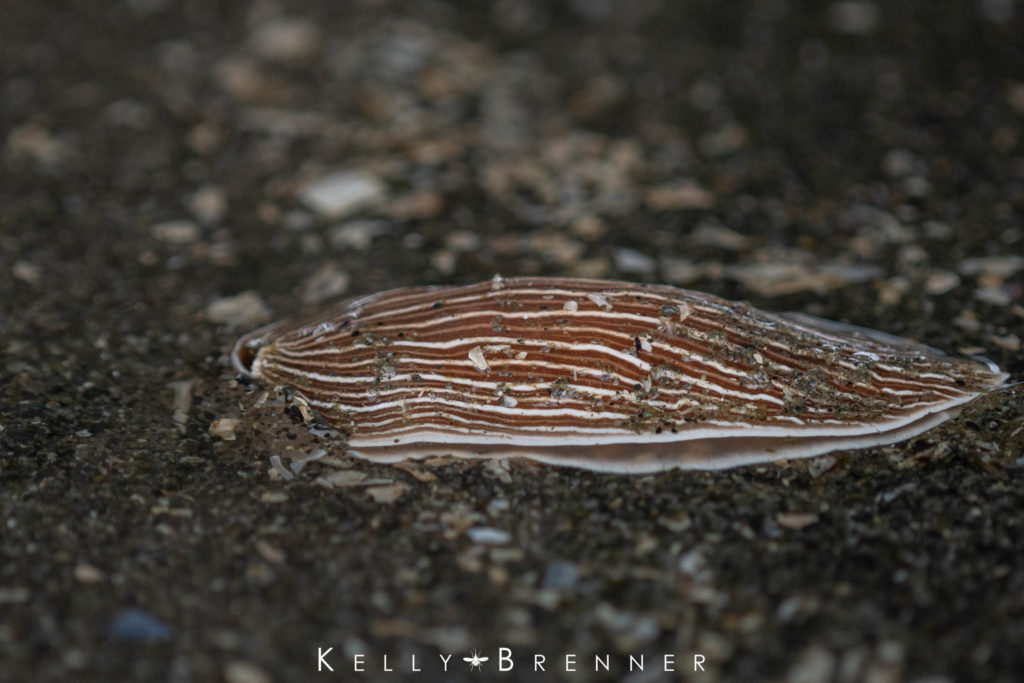
Armina californica Nudibranch
As I walked through the water, I checked each footstep to be sure I wasn’t going to step on a sea pen or any other creature. The rough water makes it hard to see underneath as it churns up sand and other debris, but I quickly spotted an interesting, orange string of something moving back and forth with the waves. Under the dock is a challenging place to photograph organisms because it’s dark and the water makes everything constantly move. Regardless, I was able to determine the stringy item were the eggs of Armina californica, sometimes called the Lined or Striped Nudibranch. I noted several strands of their eggs as I surveyed the sand.
And then my eye caught something being tossed about by the waves. I waded over to it and lifted it out of the water. It was Armina californica. These nudibranchs are easy to identify with their long, brown stripes and lack of cerata, the projections along the body that most nudibranchs have. After examining the nudibranch, I placed it in a more sheltered location next to the pier. Over my time exploring, I saw at least three more of these.
Under the dock are the remains of old pillars, and the bases where the old wood has rotted out, are now artificial tide pools where animals hide. I used my light and discovered a world in each of them. Some held sea stars, all had snails and crabs, and in two I found bright yellow sea lemon nudibranchs. One sheltered a small leopard dorid, a smooth brown nudibranch with dark brown spots, a sea slug I encounter frequently in Seattle.
The bottom of one of these pillars I noticed movement. I put my phone and light inside and waited. Long, brown threads were pulsing, being pushed from something under the layer of sediment at the bottom. Then the hidden animal pushed its body out and I knew what it was. The brown threads were tentacles and along the body I could see setae, which look like little fins or claws. This was a spaghetti worm and they usually stay hidden in their burrows.
As the tide peaked and slowly began to return, I walked along the water’s edge to see if any other nudibranchs had been washed up on the sand. I spotted a yellow ball, a sea lemon that had curled itself up to weather being tossed around in the waves. Nearby I found another slug covered in sand and I picked it up and placed it in the water. When the sand washed off of it, I was surprised to see it had no brown lines and it was not Armina californica like I had thought. But what it was I did not yet know. It was translucent, I could see red and orange of its organs through its skin. It was hard to know which side was up at first because it was pushed around by the waves, even in the shallow water.
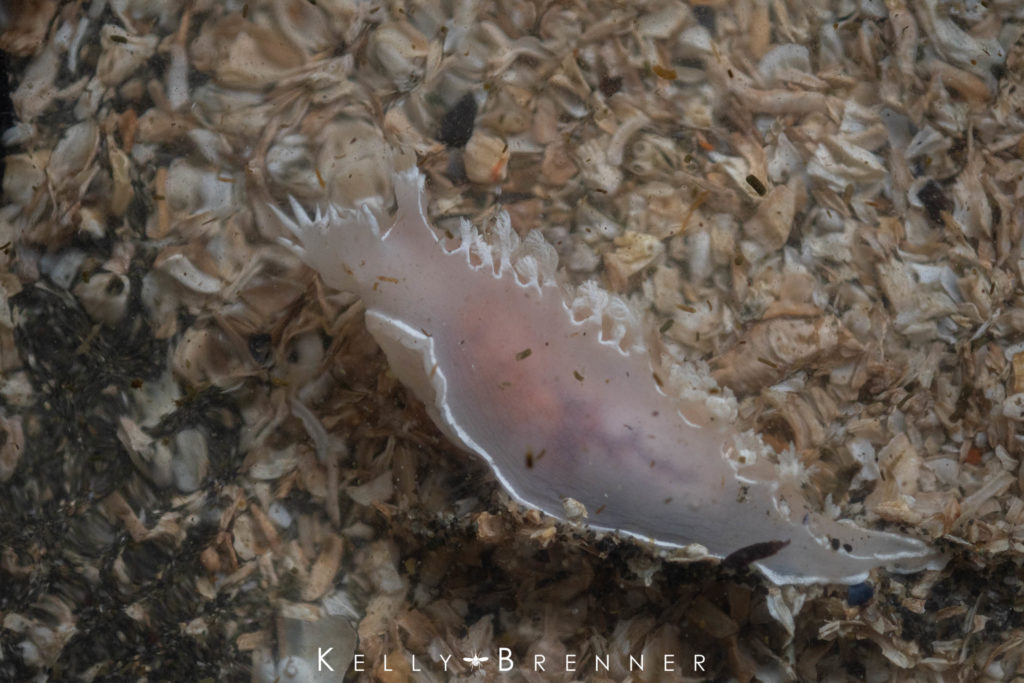
Eventually I saw that it had two white-lined ridges running the length of its body that had feathery cerata sprouting along the ridges. It had the same feather like appearance on its rhinophores as well and the frontal veil was jagged. This nudibranch, I later learned, was Tritonia festiva, another species that is known to consume sea pens.
To say I was excited to find a new species of nudibranch is an understatement.

